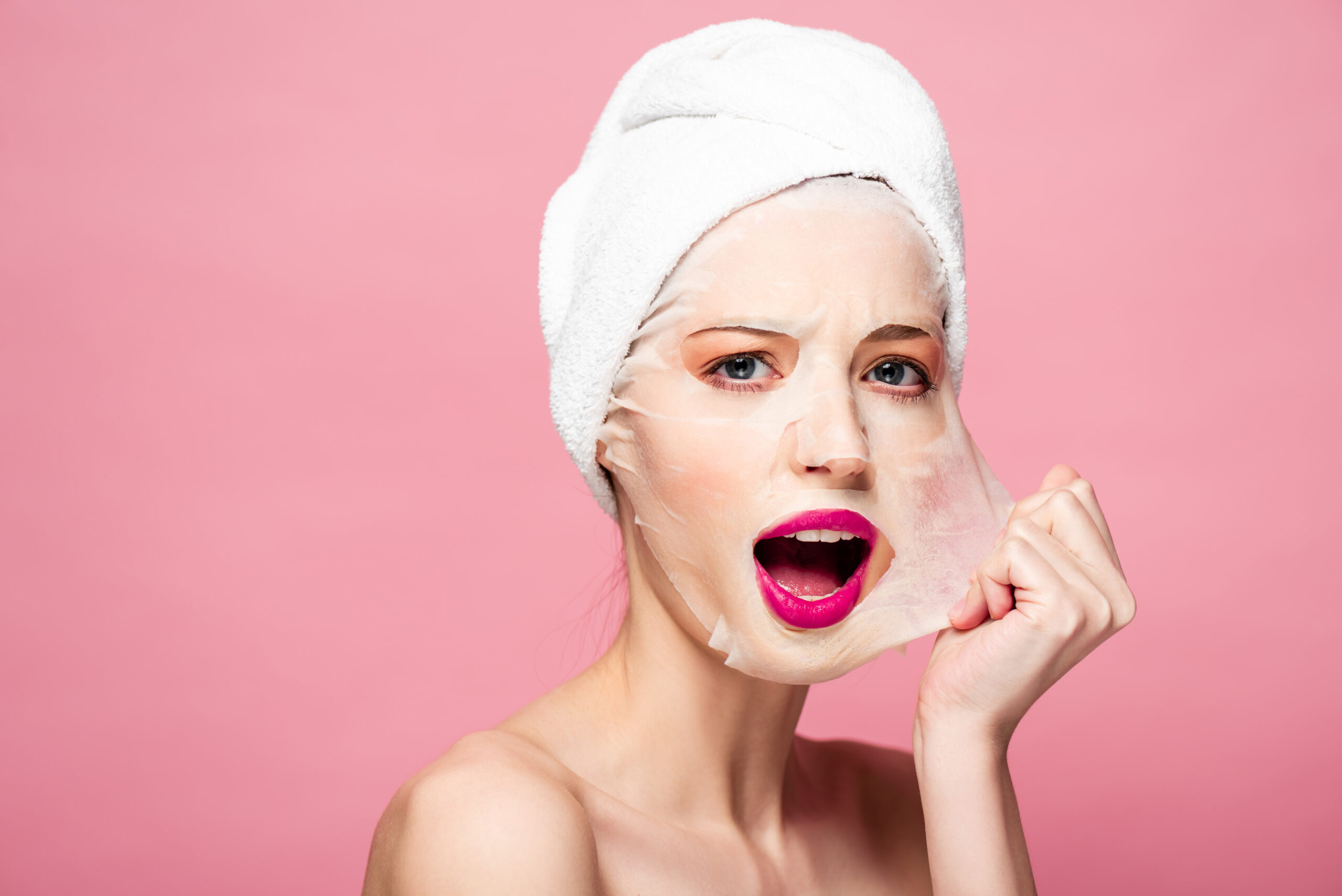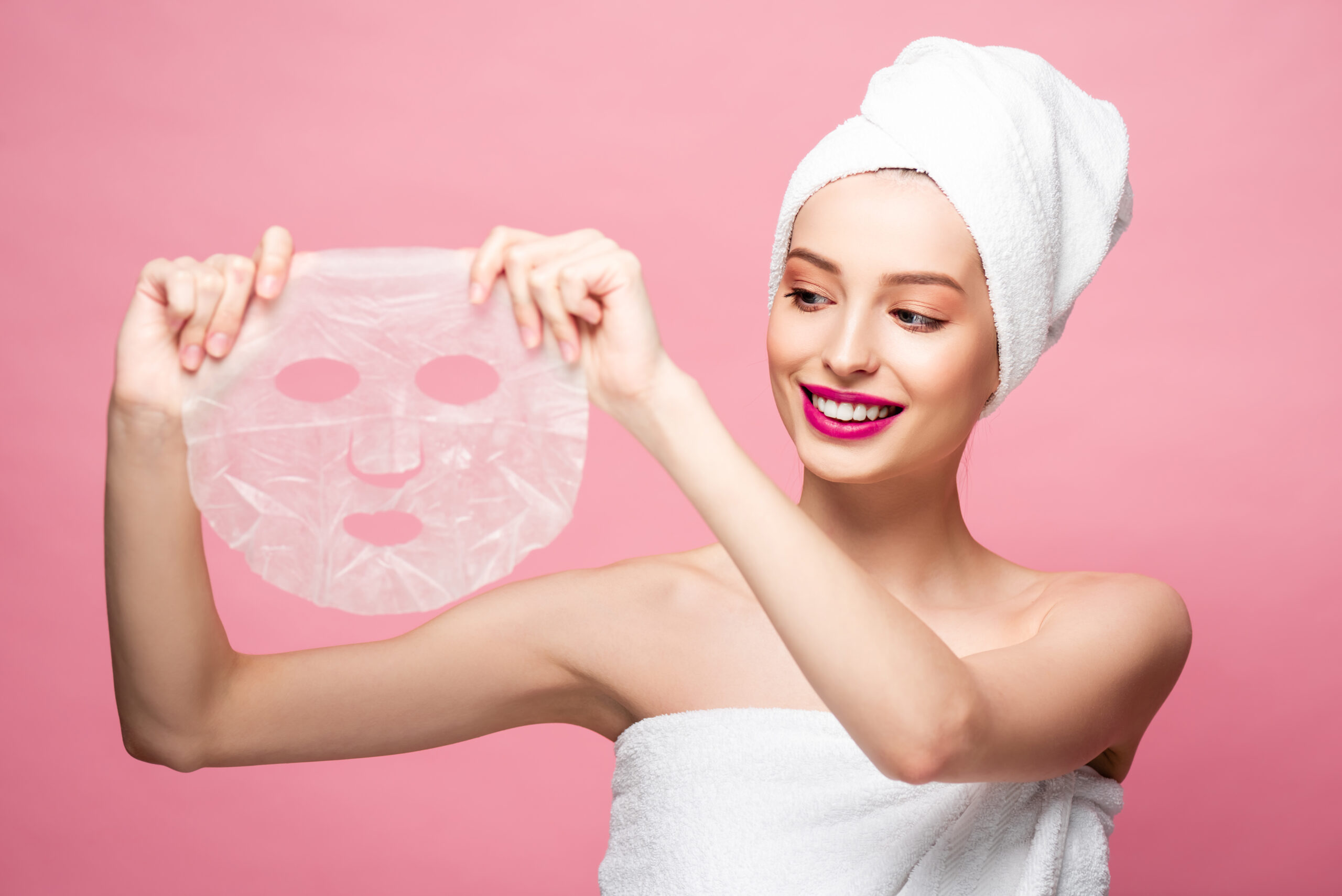In a world where self-care often takes a backseat, there’s something deeply nurturing about dedicating a few moments to yourself. Imagine this: you’ve just had a long, exhausting day, filled with meetings, errands, and endless to-do lists. As you stand in front of your bathroom mirror, you reach for a face mask.
This simple act is more than just skincare; it’s a ritual, a moment of solace where you can breathe, let the stress melt away, and indulge in some much-needed self-love.
The mask, often overlooked, is a crucial third step in your skincare routine that can transform not just your skin, but your entire sense of well-being.
In this article, we'll explore why this step is so essential, the different types of masks available, how to choose the right one for your skin type, and how to incorporate it into your routine effectively.
The Role of Masks in Skincare
Face masks are concentrated treatments designed to address specific skincare concerns, providing an instant boost of hydration, nourishment, and radiance.
Unlike daily skincare products, masks deliver potent ingredients that deeply penetrate the skin, offering immediate and noticeable results.
There are various types of face masks, including clay masks that detoxify, sheet masks that hydrate, and peel-off masks that exfoliate.
Each type serves a unique purpose, making masks a versatile addition to any skincare routine.
Clay masks, for example, are often rich in minerals like kaolin or bentonite that draw out impurities and absorb excess oil from the skin.
These masks are particularly beneficial for those with oily or acne-prone skin, as they help to prevent breakouts and reduce shine.
They work by creating a vacuum effect, pulling out toxins and dirt from deep within the pores, which can lead to clearer, healthier-looking skin over time.
Sheet masks, on the other hand, are typically soaked in a serum packed with hydrating and soothing ingredients such as hyaluronic acid, glycerin, and botanical extracts.
They are ideal for providing a quick hydration boost and calming the skin.
The serum-soaked sheet acts as a barrier, preventing evaporation and allowing the ingredients to fully penetrate the skin, resulting in a plump and radiant complexion.
Peel-off masks are another popular option, working by creating a thin film over the skin that helps to exfoliate dead skin cells and unclog pores when removed.
This type of mask can leave the skin feeling smooth and refreshed, and can also help to minimize the appearance of pores, giving the skin a more refined texture.
How to Choose the Right Mask for Your Skin Type
Identifying your skin type is the first step to selecting the perfect mask. For oily skin, clay masks are ideal as they absorb excess oil and unclog pores.
Dry skin benefits from hydrating masks, such as sheet masks infused with hyaluronic acid.
Combination skin can use multi-masking, applying different masks to different areas of the face.
Sensitive skin should opt for masks with calming ingredients like aloe vera or chamomile.
Always look for key ingredients that cater to your specific needs to ensure your skin gets the best care.
For instance, if you have oily skin, look for masks containing ingredients like charcoal, salicylic acid, or tea tree oil, which help to control oil production and prevent acne.
These ingredients work by penetrating the pores and breaking down excess sebum, which can reduce the likelihood of clogged pores and breakouts.
If your skin is dry, seek out masks with hydrating and nourishing ingredients such as honey, avocado, or shea butter.
These masks work to replenish moisture levels and create a protective barrier that prevents water loss, leaving your skin soft and supple.
For combination skin, you can mix and match masks, applying a clay mask to your T-zone and a hydrating mask to your cheeks.
This targeted approach allows you to address the specific needs of different areas of your face.
If you have sensitive skin, focus on masks that are fragrance-free and contain soothing agents like cucumber, oatmeal, or calendula to minimize the risk of irritation.
These ingredients are known for their anti-inflammatory properties and can help to calm redness and irritation, making them ideal for sensitive skin types.
Step-by-Step Guide to Using a Face Mask
Prep Your Skin
Start with a clean face. Use a gentle cleanser to remove makeup, dirt, and oil.
Cleansing your skin ensures that the mask can penetrate deeply and work more effectively.
A clean canvas allows the mask to deliver its active ingredients more efficiently, leading to better results.
Application
Apply the mask evenly over your face, avoiding the eye and lip areas.
For sheet masks, place the sheet on your face and smooth it out.
Ensure that you apply a thick enough layer for non-sheet masks to create an effective barrier on your skin.
A uniform application helps to ensure that all areas of your skin receive the same benefits, promoting an even and balanced complexion.
Duration
Leave the mask on for the recommended time. Clay masks usually take about 10-15 minutes, while sheet masks can be left on for 20-30 minutes.
It's important not to exceed the recommended time as this can cause irritation or dryness.
Following the recommended time ensures that you receive the full benefits of the mask without causing any adverse effects to your skin.
Removal
Gently remove the mask.
Rinse off any residue with lukewarm water for clay masks, or massage the remaining serum into your skin for sheet masks.
Use a soft cloth to remove any stubborn remnants without scrubbing your skin.
Being gentle during the removal process helps to avoid irritation and ensures that your skin remains calm and receptive to the next steps in your routine.
Follow-Up
Apply your usual skincare products, such as toner, serum, and moisturizer, to lock in the benefits.
The mask prepares your skin to absorb these products more effectively, enhancing their efficacy.
Following up with your regular skincare routine helps to maximize the benefits of the mask and ensures that your skin remains hydrated, nourished, and protected.
We have an article about The 9 Steps in the Skincare Routine, you should read it if you want to know what skin care steps you should do next!

Benefits of Regular Masking
Regular masking offers a multitude of benefits, both immediate and long-term. Immediately, masks can provide hydration, reduce redness, and give your skin a radiant glow.
Over time, consistent use of face masks can improve skin texture, minimize the appearance of pores, and enhance overall skin health.
Incorporating masks into your skincare routine can also provide a mental health boost, offering a relaxing and indulgent experience.
For instance, using a hydrating mask regularly can help maintain the skin's moisture barrier, preventing dryness and flakiness.
These masks work to replenish and lock in moisture, which is essential for maintaining healthy, glowing skin.
Clay masks used consistently can reduce the frequency of breakouts and keep your skin looking clear and matte.
By absorbing excess oil and impurities, clay masks can help to balance oil production and prevent clogged pores, which can lead to fewer breakouts over time.
Anti-aging masks containing ingredients like retinol or peptides can help reduce fine lines and improve skin elasticity over time.
These masks work by stimulating collagen production and promoting cell turnover, which can lead to firmer, more youthful-looking skin.
Moreover, the act of applying and relaxing with a mask can be a form of self-care, reducing stress and promoting a sense of well-being.
Taking time to pamper yourself with a face mask can be a soothing and rejuvenating experience, helping you to unwind and recharge.
Common Mistakes to Avoid When Using Masks
Over-masking is a common mistake that can lead to irritation and dryness. Stick to using masks 1-3 times a week, depending on your skin type.
Using the wrong type of mask can also be detrimental. For instance, using a clay mask on dry skin can exacerbate dryness.
Not following up with proper skincare steps, such as moisturizing, can negate the benefits of masking.
Always ensure you follow a balanced skincare routine to complement your masking efforts.
Additionally, it's important to pay attention to the ingredients in your masks.
Avoid masks with alcohol or harsh chemicals if you have sensitive skin, as these can cause irritation.
Alcohol-based masks can strip the skin of its natural oils, leading to dryness and sensitivity.
Also, be mindful of your skin's response to new products; if you experience redness, itching, or discomfort, discontinue use immediately.
Patch testing new masks on a small area of your skin before full application can help prevent adverse reactions.
This simple step can help you avoid potential irritation and ensure that the mask is compatible with your skin.
DIY Masks vs. Store-Bought Masks
DIY masks are a popular choice for those who prefer natural and cost-effective options.
Ingredients like honey, yogurt, and oatmeal can be used to create simple and effective masks at home.
For example, a honey and yogurt mask can provide hydration and soothing benefits, while an oatmeal mask can help exfoliate and calm irritated skin.
DIY masks allow you to customize the ingredients to suit your specific skin needs and preferences.
However, store-bought masks often contain advanced formulations and specific ingredients that target particular skin concerns more effectively.
These masks benefit from scientific research and development, offering potent and targeted solutions for a variety of skin issues.
Both options have their pros and cons, so choose what suits your needs and preferences best.
Store-bought masks benefit from extensive research and development, offering targeted solutions for issues like hyperpigmentation, aging, and acne.
They often contain high concentrations of active ingredients that might be difficult to source or incorporate into DIY masks.
For example, masks with ingredients like retinol, vitamin C, or peptides are designed to address specific skin concerns with precision and efficacy.
On the other hand, DIY masks are free from preservatives and chemicals, making them a great option for those with sensitive skin or a preference for natural products.
The choice between DIY and store-bought masks ultimately depends on your skin's needs, your budget, and your personal preferences.
Whether you prefer the simplicity and natural ingredients of a DIY mask or the advanced formulations of a store-bought mask, both can be effective additions to your skincare routine.
Conclusion
The mask, as the third step in your skincare routine, is more than just a luxury—it's a vital component for maintaining healthy, glowing skin.
By understanding the different types of masks, how to choose the right one for your skin type, and the benefits of regular masking, you can elevate your skincare game and enjoy the transformative effects on your skin and overall well-being.
Incorporating this step into your routine can bring both immediate and long-lasting benefits, making it a worthwhile investment in your self-care regimen.
Thanks for Reading
Thank you for reading! If you found this information helpful, please save our site in your bookmarks and share this article with your friends.
For more articles like this one, check out our Beauty section here on Woman Vitality. Happy masking!

Leave A Comment